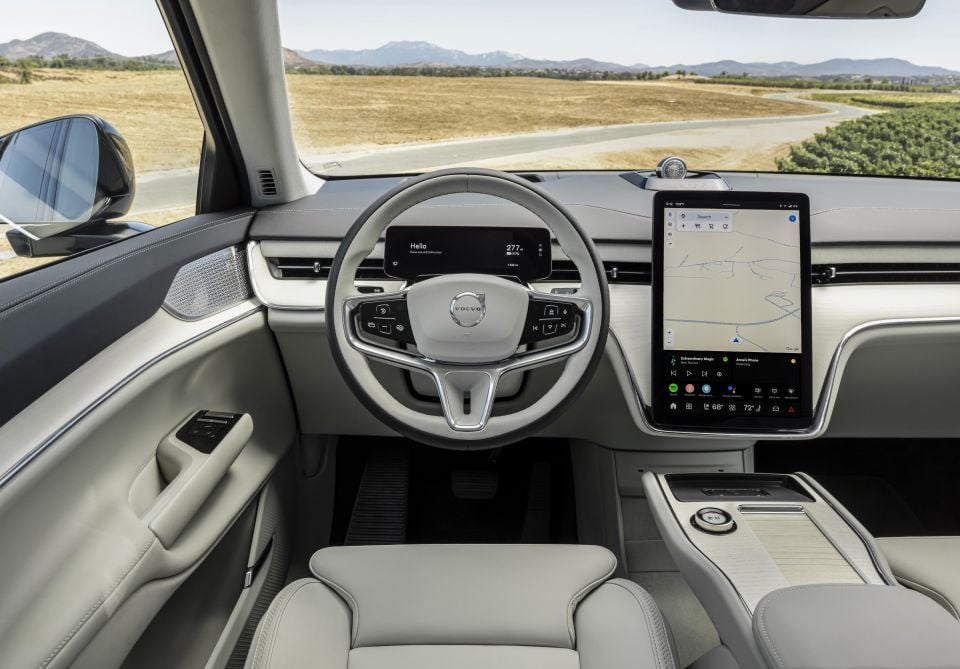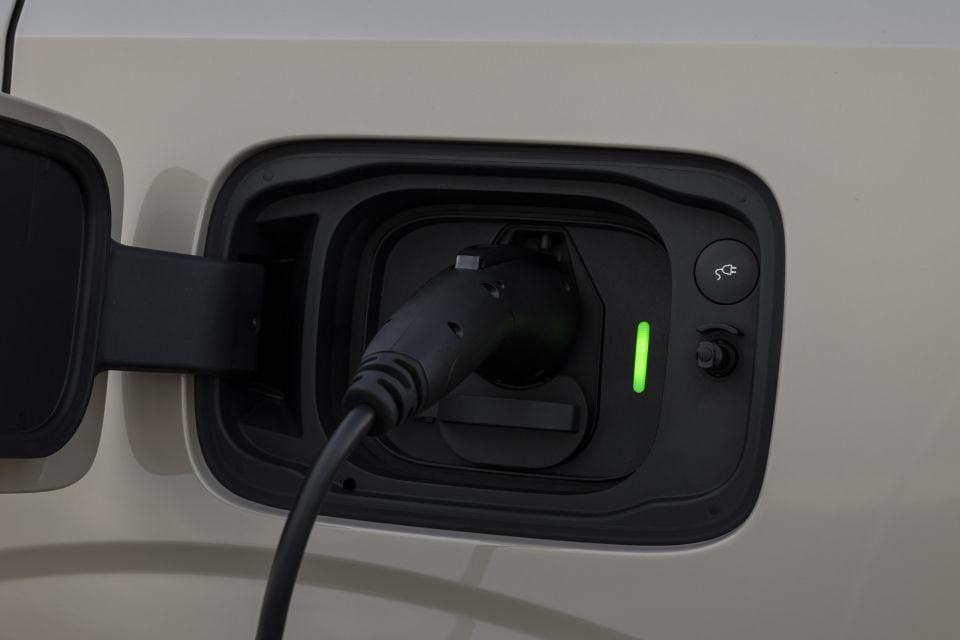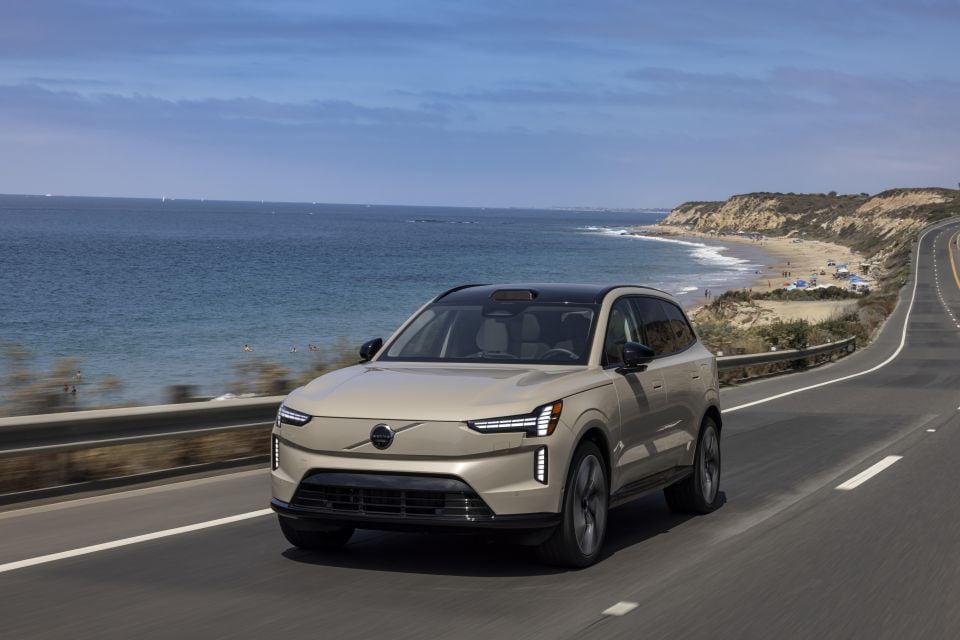

Josh Nevett
CarExpert's top five large SUV reviews of 2025
2 Days Ago
Volvo is going all-electric and it hopes the seven-seat EX90 will sway family buyers away from internal combustion cars.



Quickly see how this car stacks up against its competition. Select any benchmark to see more details.
Where expert car reviews meet expert car buying – CarExpert gives you trusted advice, personalised service and real savings on your next new car.
With Volvo committing to an all-electric future by 2030 – and even earlier in Australia – it has commenced the rollout of its brand new suite of electric vehicles to replace existing model lines.
While the XC90 will be facelifted as a plug-in hybrid to see it through to 2030, the EX90 is its all-electric successor.
We’ve had the chance to have a first drive at the vehicle’s international launch in the USA as a guest of Volvo.
Volvo hasn’t announced Australian pricing yet for the all-new EX90, but we expect it to be around the $130,000 mark before on-road costs.
Once we have this information we’ll have a price and specifications story, along with an update to this review.
To see how the EX90 lines up against the competition, check out our comparison tool.
Buy your new car without the stress. It's fast, simple and completely free.

Great service from Travis and team, second time I have used this business would not hesitate to recommend them to anyone
Craig C.
Purchased a Ford Ranger in Sunshine Coast, QLD
CarExpert helped Craig save thousands on his Ford Ranger, now let us save you on your next new car.
Find a dealVolvo has gone for a minimalist approach inside the EX90’s cabin. Buttons have been banished, and a Tesla-esque approach has been targeted to condense all the vehicle’s functions to the central touchscreen.

One of the main reasons the EX90 has been extensively delayed is due to software integration issues. But, in my opinion, the wait will be worth it for the benefit of vertical integration.
Car companies typically rely on tier one suppliers to supply all the electronics and components to make a vehicle work. There’s a mixture of engine modules, infotainment modules, safety system modules, central locking modules, climate modules… the list goes on.
The car company then integrates all of these within a central technology stack. Changes to any of these systems then requires input – and additional cost – from tier one suppliers. Things never happen in realtime, which is why you typically have to wait until a facelift rolls around to implement changes.
With the SPA2 platform that EX90 sits on, vertical integration was the key. Volvo brought as many of the software systems in house as possible to ensure it was in charge of the stack, and it was in charge of changes and interactions within that stack. It’s a step change for a car company that has always done things a certain way.
And, it’s the primary reason the EX90’s launch was delayed so much.

As a result, Volvo now builds its infotainment system around Android Automotive OS (not Android Auto), which allows the manufacturer to build apps and technologies around the base operating system. The end result is a pretty smooth experience with extended functionality that can be updated on the fly with over-the-air updates.
Core to the system is the Google Assistant, which can use cloud-based voice processing to understand commands, and a litany of apps that can be added to the system to further functionality.
Volvo now uses an electronic key to access the vehicle. The owner can use an NFC card (which requires a physical tap, and looks like a credit card), their phone, or an Apple iPhone specific key.
Volvo admitted it was still working to refine this technology. We had a number of occasions where we couldn’t start the vehicle or change gears without exiting and entering again.
Volvo has been creative with the woodgrain in front of the driver and front passenger. The wood panelling features cutouts that are invisible during day time. But at night they offer a subtle backlight in the cabin that brings a beautiful ambience into the fold.


We will get two versions of the EX90 in Australia, with the base featuring wool blend seat trim the more expensive model featuring a leather-style material. We don’t know what the Australian car looks like, and are unsure whether the seats are actually leather or a synthetic arrangement.
Sitting on the same wheelbase as the XC90, the EX90 offers decent leg- and headroom in the second row for adults. I’m 185cm tall and found ample knee-, head-, and toe room. The second row also slides to offer extra accommodation for third row occupants.
On the storage front you’ll find a decent-sized centre console up front with exposed storage beneath the volume control. There’s also a pair of cup holders and dual USB-C ports for charging. The wireless charger also features air vents with cooling to ensure your phone doesn’t overheat while charging.
The second row features decent-sized door bins and more USB-C charging ports.
In the third row, there’s enough room for kids and adults below 175cm in height. When I tried to fit, I found a lack of head- and kneeroom. With the second row pushed forward it was more accommodating, but it did then compromise the amount of available space for second row occupants.


Creature comforts in the third row include more USB-C charging and cup holders.
Surprisingly there’s also plenty of room behind the third row for small luggage above the cargo floor and enough room for cables and odds and ends beneath the cargo floor.
There’s a frunk available with enough room for a small set of groceries or charging cables.


| Dimensions | Volvo EX90 |
|---|---|
| Length | 5037mm |
| Width | 1964mm (2113mm incl. mirrors) |
| Height | 1744mm |
| Wheelbase | 2985mm |
| Cargo capacity | 310L (behind third row, to load cover) 655L (behind second row, to load cover) 1915L (second and third rows folded) 65L (under load floor) 34L (under bonnet) |
To see how the EX90 lines up against the competition, check out our comparison tool.
The EX90 will be offered with two dual-motor drivetrains initially.

Charging comes in the form of three-phase AC up to 16A and DC charging at up to 250kW. Volvo claims a combined WLTP driving range of between 570-614km.
| Twin Motor | Twin Motor Performance | |
|---|---|---|
| Drivetrain | Dual-motor electric | Dual-motor electric |
| Battery | 111kWh nickel manganese cobalt | 111kWh nickel manganese cobalt |
| Electric motor power | 173kW (front) 127kW (rear) | 180kW (front) 200kW (rear) |
| Electric motor torque | 420Nm (front) 350Nm (rear) | 420Nm (front) 490Nm (rear) |
| Total system power | 300kW | 380kW |
| Total system torque | 700Nm | 910Nm |
| 0-100km/h time | 5.9s | 4.9s |
| Top speed | 180km/h | 180km/h |
To see how the EX90 lines up against the competition, check out our comparison tool.
One of the big benefits of not supersizing this chassis is that the EX90 feels just like an XC90 to drive in terms of its size. Manufacturers have gone crazy with big wheelbases – think over 3000mm – that afford more space in the cabin but compromise handling and ride due to the expanse of space between the wheels.

Straight out of the gates the EX90 is silent. Yes, all EVs are silent, but this is next-level quiet. The steering is light at low speeds – but not overly light – and visibility out the front and sides is great. Volvo missed an opportunity to include a digital rear-view mirror, given visibility will be compromised when you have occupants in the third row.
A welcome addition to the cabin is a screen ahead of the driver. It’s a small display that offers key metrics like speed, range, navigation display, and the function of the semi-autonomous systems.
We were in the high-specification Ultra grade for our brief drive around the Newport Coast area of California. The very smooth roads meant the ride was excellent, even on 22-inch alloy wheels. That’s not something you can typically say about a Volvo on big wheels.
That’s thanks to an air suspension setup with adaptive damping. While it soaked up bumps beautifully, it did reach its limits on continuous undulations and areas where the suspension couldn’t respond quick enough to meet sudden changes in road quality. We’ll be keen to see how this fares on Australian roads when we get it back home.
A quick stint across the Ortega Highway to Lake Elsinore gave us an opportunity to pick up the pace. The Performance AWD setting allows the vehicle to go from an open differential on the rear axle to a semi-closed arrangement thanks to a dual-clutch on the rear motor.

It offers sharper throttle response and mimics a limited-slip differential to achieve better performance. While it was impressive, there was no escaping the kerb weight. You’re sitting at around 3000kg with passengers on board, and you really begin to feel the weight as the speed picks up and the corners tighten.
It’s not the end of the world, but it’s a matter of physics you can’t escape with a vehicle this size.
The other element of physics you won’t get away from is the energy use. Depending on how and where you drive, it will consume over 20kWh/100km. So while the 111kWh battery is big enough to take advantage of range, there’s only so much you can achieve when the mass nears 3000kg.
We tested the semi-autonomous driving functions on the freeway and around suburbia. Around the suburbs it worked okay but lacked the confidence you’ll find from Tesla’s semi-autonomous drive modes, but ultimately you shouldn’t be using this technology around the suburbs.
Where it did show promise was on the highway, where it felt confident and in charge of where it was headed. It never felt out of control or did things you wouldn’t expect it to do.

The EX90 uses a litany of sensors that include LiDAR, which is a laser-based distance measurement tool that creates a 3D render of its environment to accurately position the vehicle and offer more accurate self-steering functionality. It’s the orb looking thing you see above the windscreen.
Volvo has yet to confirm specifications for the Australian-market EX90.
The Volvo EX90 has yet to be tested by ANCAP or Euro NCAP.

While local specifications have yet to be confirmed, the EX90 is available with safety equipment such as:
Volvo has yet to confirm service pricing for the EX90.
The company currently backs its vehicles in Australia with a five-year, unlimited-kilometre warranty, and its EV batteries with a separate eight-year warranty.
Unfortunately we still don’t know pricing for the EX90 so it’s hard to judge how compelling this will be as a price proposition. But, we do know that it’ll be built in China for the Australian market.

That will mean cost efficiencies and should mean it puts Volvo in a good position to compete with things like the Mercedes-Benz EQS SUV and Kia EV9.
There’s also hope Volvo will offer a guaranteed resale value option when the vehicle goes on sale in 2025 to help with depreciation; something that is a big talking point at the moment with electric vehicles.
We expect the EX90 to be priced around the $130,000 mark, with the entry level unlikely to sit within the luxury car tax threshold for an FBT-free private novated lease.
Either way, we’re looking forward to having a drive of the EX90 in Australia when it finally lobs. It has the promise of offering a very premium vehicle in what will fast become quite a crowded market.

Click the images to see the full gallery
MORE: Everything Volvo EX90
Where expert car reviews meet expert car buying – CarExpert gives you trusted advice, personalised service and real savings on your next new car.
Paul Maric is a CarExpert co-founder and YouTube host, combining engineering expertise with two decades in automotive journalism.


Josh Nevett
2 Days Ago


CarExpert.com.au
3 Days Ago


Damion Smy
5 Days Ago


Derek Fung
5 Days Ago


Ben Zachariah
8 Days Ago


Matt Campbell
12 Days Ago